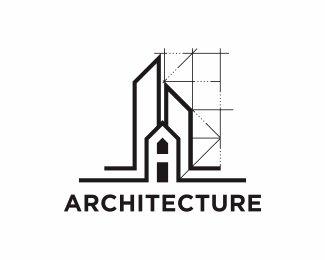
Architecture design refers to the process of defining the structural elements, organisation, and implementation of a system or building, in order to meet specified requirements and to achieve a desired architectural style or aesthetic. In the context of software or information systems, architecture design involves the creation of a high-level representation of the system, its components, and their relationships, to guide the development of the system. This can include defining the software architecture, hardware architecture, and network architecture. The goal of architecture design is to provide a blueprint for the development of a system that is flexible, scalable, maintainable, and meets the needs of the stakeholders.
The scope of architecture design can encompass a wide range of disciplines and aspects, depending on the context and the particular project being considered. Here are some of the areas that may be included within the scope of architecture design:
Building design: This involves the conceptualization, planning, and design of buildings, including their layout, structure, and materials. It can also encompass the design of interiors, landscaping, and site planning.
Urban design: This involves the design of cities and public spaces, including streetscapes, public squares, parks, and plazas. It focuses on the relationships between buildings, open spaces, and the movement of people and vehicles.
Landscape architecture: This involves the design of outdoor spaces, including parks, gardens, and other green spaces. It can also encompass the design of outdoor structures such as bridges, retaining walls, and walkways.
Infrastructure design: This involves the design of the physical and technical systems that support the functioning of cities and communities, such as transportation systems, water supply and treatment systems, and energy distribution networks.
Software architecture: This involves the design of the structure and organisation of software systems, including their components, interactions, and interfaces.
To study a full-time BArch programme, candidates must fulfil the eligibility requirements given below:
Candidates must have passed their 10+2 examination or equivalent with Mathematics as one of the subjects.
They must have secured a minimum of 50% marks (45% marks for reserved category) in 10+2 or
Should have passed 10+3 Diploma (any stream) recognised by Central/State governments with 50% aggregate marks or
Should have completed their International Baccalaureate Diploma, after 10 years of schooling, with not less than 50% marks in aggregate and with Mathematics as a compulsory subject of examination.
Candidates can check the required skills to excel in the BArch course.
Knowledge of Designing Skills
Communication Skills
Critical Thinking
Analytical Skills
Ability to take initiative
Critical Thinking
Many architects start out as consultants with a regular monthly payout of INR 2-4 lakh per annum. The salary varies depending on the skill set of the candidate. Here are the popular job profiles and the average salary one can expect after completing a BArch programme.
|
Project Architect |
INR 5 Lakh |
|
Architecture Designer |
INR 6 Lakh |
|
Principal Architect |
INR 18.50 Lakh |
|
Interior Designer |
INR 4 Lakh |
|
Assistant Professor |
INR 6 Lakh |
There is no definitive answer to the top 5 architecture colleges in Ahmedabad, as different rankings and evaluations may use different criteria and methodologies. However, some of the most highly regarded and well-known architecture schools in Ahmedabad include:
CEPT University (Centre for Environmental Planning and Technology)
L.D. College of Engineering
School of Architecture, Indian Institute of Technology (IIT) Gandhinagar
School of Architecture, Pandit Deendayal Petroleum University (PDPU)
Institute of Architecture and Planning, Nirma University
It is worth noting that these rankings are subject to change, and there may be other institutions that are equally deserving of recognition based on different perspectives and criteria.